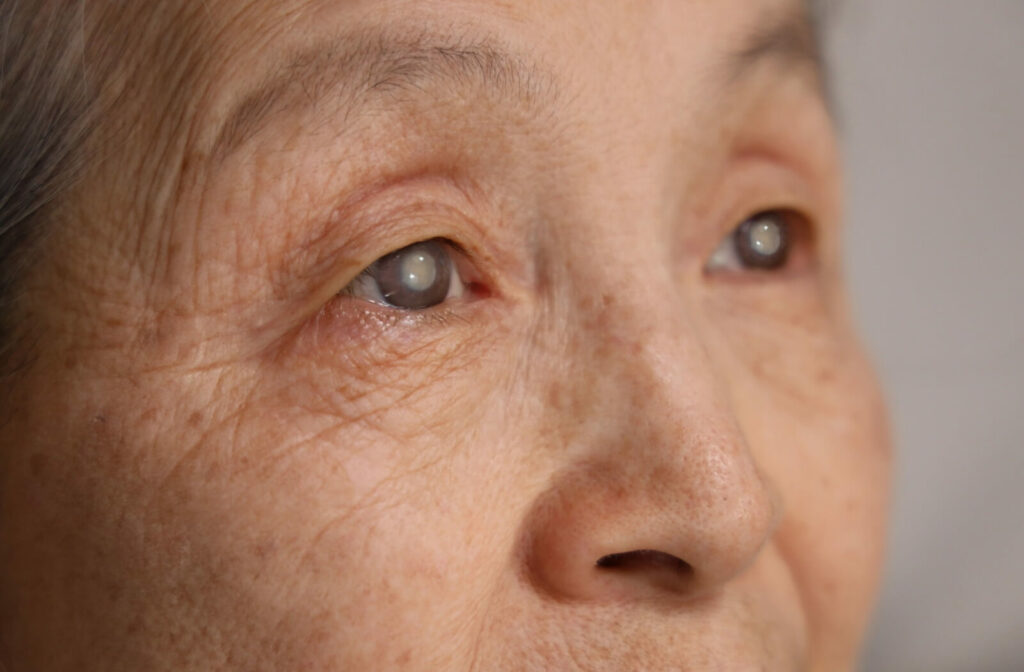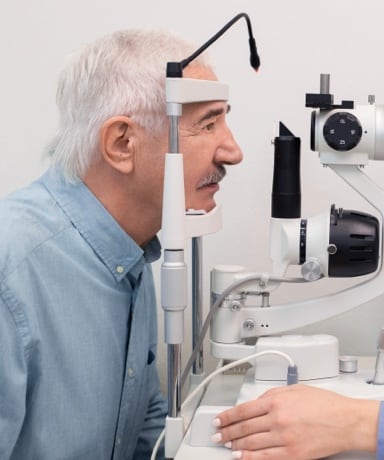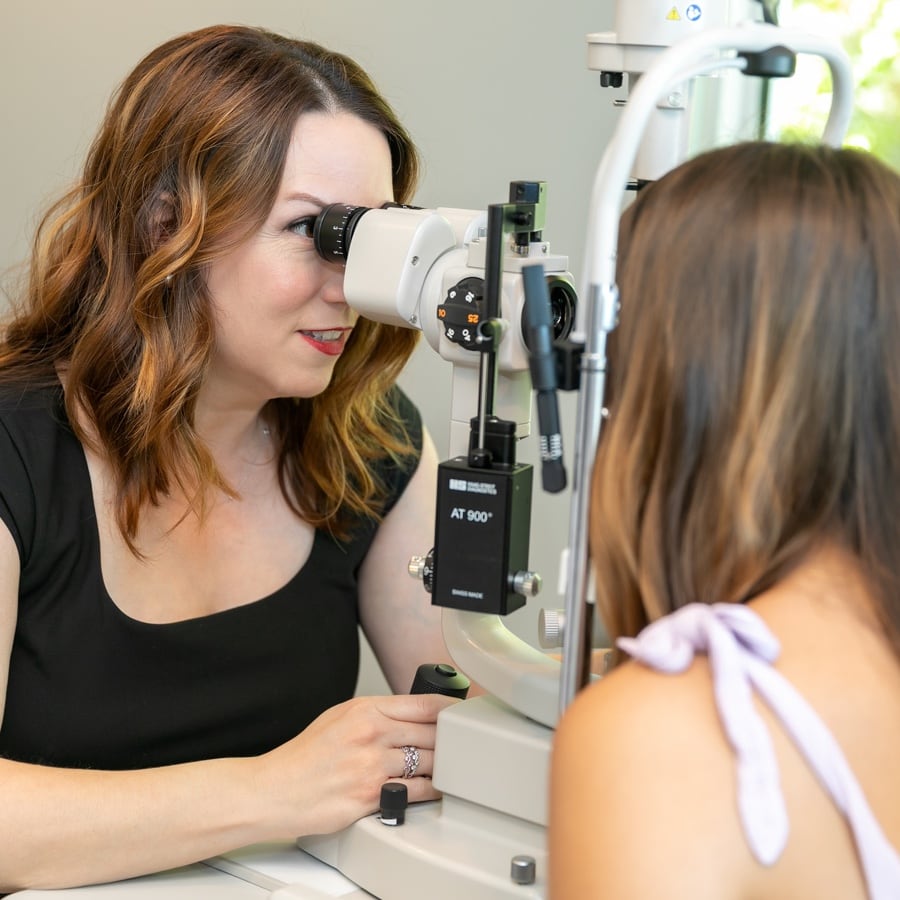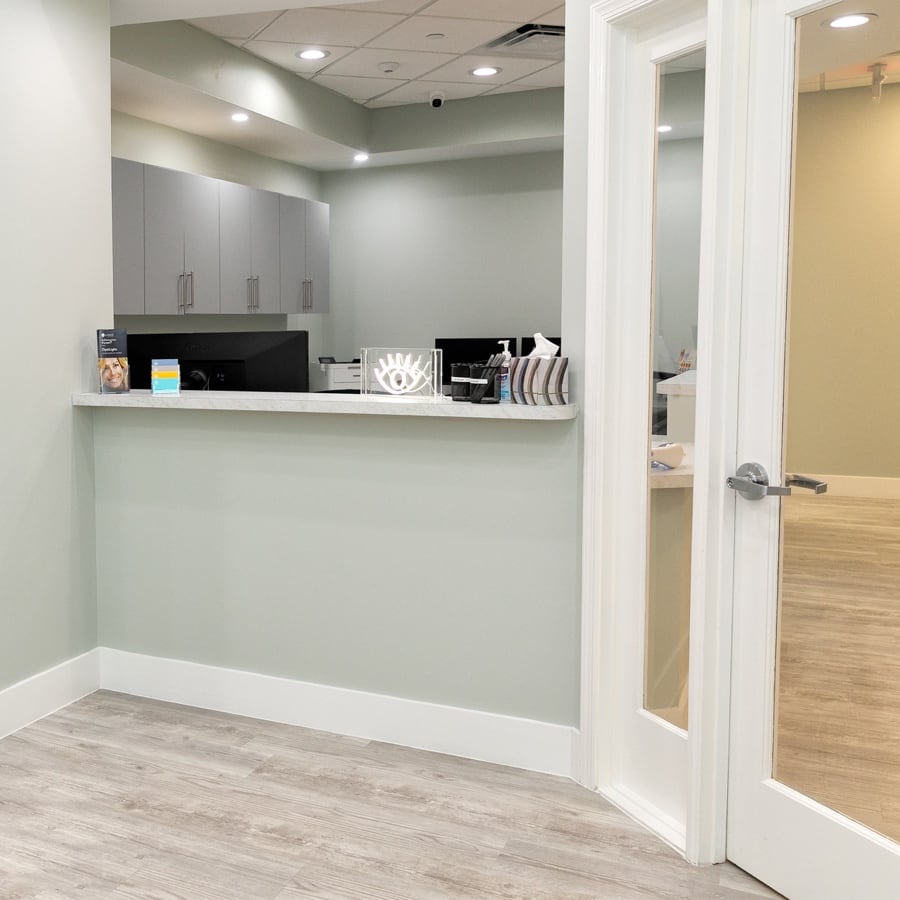If you are considering eye surgery for cataracts, you may be wondering if your new intraocular lens (IOL) will eventually wear out or need replacing. Intraocular lens implants are designed to last for the rest of your life, and it’s only on rare occasions that your lens needs to be replaced.
There are multiple types of intraocular lenses, and learning their differences can help you understand your options. Knowing what to do after surgery can also help with the recovery process.
What Is an Intraocular Lens Implant (IOL)?
An intraocular lens (IOL) is an artificial lens surgically implanted into the eye to replace the eye’s natural lens. Often used to manage cataracts, the artificial lens replaces a natural lens that has turned cloudy.
Intraocular lenses are typically made of silicone, acrylic, or other plastics. They may also include a coating that helps protect the eye from ultraviolet rays.
How Long Do Intraocular Lenses Last?
Unlike glasses or contact lenses, an IOL is designed to stay in place for the rest of your life. On rare occasions, an intraocular lens exchange may be required. This is when your old lens gets swapped out for a new one. Reasons for an IOL exchange include complications from the procedure, unwanted side effects (such as seeing halos), and an incorrect refractive power in the existing IOL.
Types of Intraocular Lenses
There are different types of IOLs to suit a variety of needs. These include monofocal, multifocal, toric and more.
Monofocal Intraocular Lens
This is the most popular type of intraocular lens. These lenses are designed with one focusing distance in mind, allowing you to see things at near, medium, and long distances. Many people use them in combination with reading glasses.
Multifocal Intraocular Lens
This type of intraocular lens has multiple zones of focus. Over time, your brain will learn how to use each zone for the vision task at hand. Some people find they have less need for their reading glasses after getting multifocal IOLs. The downside is that these lenses may cause glare and halos to appear around lights at night.
Toric Intraocular Lens
Designed for people with astigmatism, toric IOLs aim to correct the problems created by an abnormally shaped natural cornea or lens. An eye with astigmatism has a more oval shape like a football, rather than an ideal round shape like a soccer ball.
Extended Depth-of-Focus Intraocular Lens
These lenses use a single long focal point and can make it easier to see things at medium and long range. However, reading glasses may still be required for near work.
Accommodative Intraocular Lens
Similar to the natural lenses you were born with, accommodative IOLs are designed to move and change shape to focus, whether objects are nearby or far away. This type of lens may help you use glasses less often.
If you’re interested in getting an IOL implant, talk to your eye doctor. They can help you understand the benefits and drawbacks of each type of lens.

Who Needs Intraocular Lenses?
Intraocular lens implants are commonly used to treat cataracts. This is a condition that causes your eye’s natural lens to get cloudy over time. It can result in symptoms like:
- Blurry vision
- Challenges driving at night and the appearance of halos around lights in the dark
- Trouble reading small print despite using glasses
- Seeing less saturated colors
- Difficulty playing certain sports that are dependent on vision, such as hitting a tennis ball with a racket
Recovering From Eye Lens Replacement Surgery
A lens replacement surgery typically involves administering topical anesthesia (via eye drops), disintegrating the natural lens with a laser or ultrasound, and using a vacuum to suction out the lens. This is called phacoemulsification.
An intraocular lens implant procedure is relatively simple and should take 30 minutes or less. Recovery time can take 8 to 12 weeks, however, and during that time, there are things you can do to help take care of your eyes:
- Take medicated eye drops as prescribed
- Protect your eyes by wearing sunglasses often and sleeping with an eye shield
- Don’t rub your eyes
- You may be instructed to avoid most forms of exercise for a certain period
Make transportation arrangements to get home after the surgery, as your vision will be too blurry for you to drive home immediately after.
Professional Eye Care in Palm Beach Gardens
Cataracts are a common eye condition and develop with age. In fact, they affect over half of Americans aged 80 and over. At first, cataracts may only require a few lifestyle changes or a new eyeglass prescription. But when they start getting in the way of your life, it may be time to consider surgery.
If you’re experiencing cataracts, talk to your eye doctor. Dr. Iglesias at Gardens Eye Institute is a board-certified ophthalmologist with extensive experience in cataract removal. To learn more about your cataract treatment options, book an appointment with us today.













